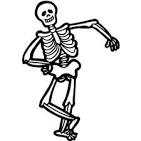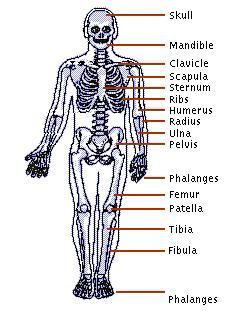Sometimes it just takes a book to start the action. I’ve compiled a list of favorite children’s picture books that will encourage kids to get up off their seat, onto their feet…and get moving!
Animal Action ABC by Karen Pandell
In this extraordinary board book, children learn action words and get the wiggles out by imitating animals. From Arch to Balance, 26 action words, each headed by a different letter of the alphabet, are introduced, each accompanied by a pleasant verse that links the word to an animal. Dramatic photos of wildlife in action and delightful spot photos of young children imitating the animals’ movements punctuate the action.
Bal Yoga for Kids by Glenda Kacev & Sylvia Roth
This book is a child and teacher friendly program which is both a fun and easy method teaching kids yoga postures from A – Z with a sing along & narrated CD and DVD demonstration. A song accompanies each letter and pose with whimsical illustrations and photographs that stretch the body and imagination.

Barnyard Dance by Sandra Boynton
“Stomp your feet! Clap your hands! Everybody ready for a BARNYARD DANCE!” An assortment of irrepressible farm animals join in a rollicking square dance. As an education tool, children will learn to recognize farm animals, and associate simple verbs to the action, such as bow, bounce, swing, and leap. And most importantly get up and dance!
The Busy Body Book: A Kid’s Guide to Fitness by Lizzy Rockwell
Learn how your bones and muscles, heart and lungs, nerves and brain all work together to keep you on the go. Kids walk and skate and tumble through these pages with such exuberance that even sprouting couch potatoes will want to get up and bounce around—and that’s the ultimate goal. Studies show that American kids are becoming more sedentary and more overweight and that they carry these tendencies with them into adolescence and adulthood. Experts agree that we need to help kids make physical activity a life-long habit. Through education, information, and encouragement, this book aims to inspire a new generation of busy bodies!
Can You Make a Scary Face? by Jan Thomas
This exuberant, interactive picture book starring a bossy little ladybug and a GIANT hungry frog will have kids leaping up and down and out of their seats, doing the chicken dance, and make silly scary faces of their own.
Clap Your Hands by Lorinda Bryan Cauley
Full of reasons to get up and dance. Little ones will jump at the chance
to join this menagerie of zany animals and children as they stomp, wiggle, roar, and spin their way through the day, as the rhyming text reinforces important concepts.
From Head to Toe by Eric Carle
From their heads down to their toes, kids will be wriggling, jiggling, and giggling as they try to keep up with these animals! Alligators wiggle, elephants stomp, gorillas thump, and giraffes bend. “Can you do it? I can do it!” is the confidence-building message of this fun-filled interactive picture book.
Move! by Steve Jenkins & Robin Page
A playful introduction to motion in the animal kingdom that invites young readers to guess some of the unusual ways that animals get around. Follow them as they swing, dance, float, leap, and slide from page to page, then learn why these animals move the way they do.This book is wonderful for learning about how your body can move and how each animal can move.
The Squiggle by Carole Lexa Schaefer
When a group of young children set off with their teacher on an orderly walk through the park, the very last little girl spies a “squiggle” (a piece of string) on the ground and picks it up. As she twirls, twists, and turns the long red ribbon, she imagines it to be a dragon, a thundercloud, a “full fat moon,” and much more. She hastily rejoins the group and, much to their delight, demonstrates her treasure’s potential. Then the youngsters continue the walk, not as a “bunched-up, slow, tight, straight line,” but in exuberant squiggle-style, instead. Give each child a streamer ribbon or streamer scarf and let them create their own “squiggles” as your read the book again and again.

Get Up and Go! by Nancy Carlson
We all come in different shapes and sizes, and it doesn’t matter if you are tall, short, skinny, or round. Your body is your own, and you need to take care of it. This book is the perfect catalyst to get readers moving. Vibrant, fun-filled illustrations and an encouraging text explain the many great reasons to exercise, from making new friends to going new places, or just because it’s good for your body.
Little Yoga by Rebecca Whitford
Here is a playful introduction to nine simple yoga exercises for toddlers. A fun book even for those that know nothing about yoga as it relates the poses to well known animals. For example, “standing forward bend” is renamed “monkey” because the pose resembles a monkey bending over. The back of the book has photos of actual children doing the poses as well as tips and an explanation for teaching the poses correctly.
My Aunt Came Back Adapted by John M. Feierabend
Sung as an echo song (to the classic tune of “How Dry I Am”), and accompanied by hand and body movements, children will laugh out loud at the antics of the Aunt, who in each verse travels to another strange place and brings back some unusual things.
Tony Chestnut by Laurie Monopoli
The much-loved children’s song, Tony Chestnut , comes to life in an interactive children’s picture book with accompanying CD. “The Book About Tony Chestnut” invites children to actively join-in, participate and connect with the storybook’s characters (Eileen, Neil, Pat, Bob, Russell and Skip). Tony Chestnut uses the sounds of his name (Toe, Knee, Chest, Nut) to sing this really cool song. As he starts singing he points to the corresponding body parts. “Toe Knee Chest Nut Nose Eye Love You Toe Knee Nose.” The song starts out slowly, in order to get the kids used to pointing to the body parts, and then quickly picks up speed. It’s fun trying to keep up!
We’re Going on a Bear Hunt retold by Michael Rosen
If you’ve ever heard the song “We’re Going On a Bear Hunt” then you know the way the story goes. It encourages movement and active involvement. Stand up and act out the story and use hand and body motions as you read…to cross the tall wavy grass (swishy swashy), ford the deep cold river (splash splosh), tromp through the ooey-gooey mud (squelch squelch), wander through the deep dark forest (stumble trip!), run through a whirling snowstorm (Hoooo woooo), and at last enter a deep dark cave (tiptoe). “What’s that? It’s a bear!” And now it’s time to run back over every place you’d been before to escape.

We’re Going on a Lion Hunt by David Axtell
In this beautifully illustrated rendition of a well-known children’s chant, two sisters are looking not for a bear but for a lion–a lion that lives on the African savanna, where the girls go through swishy-swashy long grass, a splishy-splashy lake, and a Big Dark Cave. When they finally meet their lion, they have to run, run, run through it all again to get back home. Like Michael Rosen’s “We’re Going on a Bear Hunt” this picture book will encourage preschoolers to participate and move.
You Are A Lion! And Other Fun Yoga Poses by Taeeun Yoo
With simple instructions, this wonderfully illustrated book introduces kids to yoga in a fun and interactive way. Each pose is introduced like an animal and kids can then do the movement as well as make the animal sounds— flutter like a butterfly, hiss like a snake, roar like a lion and more.
Discount School Supply® Product Recommendations:
“Bal Yoga for Kids” Book, CD and DVD (AP9555J)
“We’re Going on a Bear Hunt” Book (BEARHUNT)
Rainbow Dancing Wrist Bands – Set of 6 (RNBW)
Streamer Scarves – Set of 12 (SWISH)

























